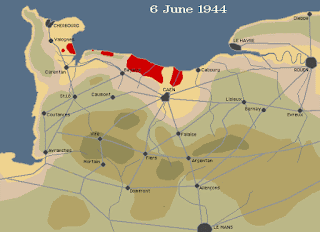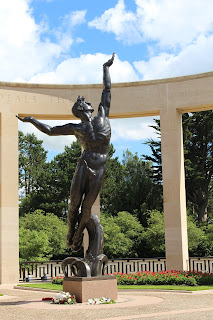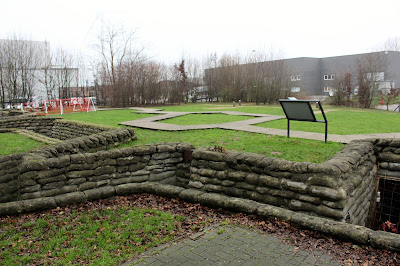 |
| 1917 portrait of Private Joseph William Guyton. |
7 June 2019
Detroit, MI, USA
Joseph William Guyton.
Private Joseph William Guyton.
These names have continued to appear over and over through various avenues of research I have been doing regarding World War I. Until a few months ago I had never put together how they relate to my home state of Michigan and even more local history in my hometown, Detroit. Then it suddenly clicked, thanks to Google Maps.
In 1917 Joseph William Guyton was drafted into the United States Army. A native of Evart, Michigan, Guyton spent most of young life as a farmer and well driller. Because he had a daughter, Olive, he could have opted out of service. However he chose to serve as ordered.
 |
| Newspaper clipping. 1918. |
On May 15, 1918, Private Guyton's unit, the 126th Infantry Regiment was placed in combat operations along the front lines in trenches commanded by French forces in the Alsace region, which has historically alternated between French and German rule. At the time of World War I, this was German land. While manning a machine gun post, Guyton fired on Germans approaching his position. Shortly after midnight on May 24, 1918, Private Guyton became the first American killed on German soil in a 20th Century-World War.
As this land had been fought over between the French and Germans for centuries, the loss of American life to reclaim the region in the name of France, was widely celebrated. He was quickly buried in a nearby church yard and on the following day, the French Commander of the unit issued the following order during presentation of the Croix De Guerre:
Divisional Order No. 297 General Gamelin, Comannding the 9th Infantry Division, "The soldier, Joseph W. Guyton, of the 126th American Infantry Regiment, 'on guard in the first line was killed by a machine gun bullet. He is the first soldier of the 32nd American Division to fall fighting for the cause of right and liberty on Aiscian soil, beside his French comrades."
 |
| Michigan Historical Site marker. Evart, Michigan. |
His name was relatively obscure in America as the toll of Soldier Dead passed 100,000 as 1918 continued. As the Graves Registration Service (GRS) processed and prepared remains for permanent burial overseas, or shipment back to the US, the sacrifice of Private Guyton became more recognized and his remains were isolated for special recognition. The willingness to step onto hostile enemy territory and die is not new in the world of war. But for a budding world power like the United States, stories and heroes like Joseph Guyton were important for building the nationalistic view of glory in death on the battlefield.
At a funeral in Hoboken, New Jersey honoring the remains of 5,000 Americans returning home for final burial, President Harding placed a commemorative wreath on Private Guyton's coffin. He spoke the following:
"In the name of the republic, I bestow this tribute on the casket of the first soldier who perished on the soil of the enemy...I chose it because I am offering the tribute to the one returned whose death on enemy soil marked the day when our civilization went face forward and the assault on our present day civilization knew it had failed. May 24, 1918, is the date on which the soldier was killed, and the name is that of Joseph W. Guyton, Comany I of the 126th Infantry, a resident patriot and hero of the State of Michigan of the United States of America."
-President Warren G. Harding
 |
| Joseph Guyton Elementary School, Detroit. 1921 |
Private Guyton's body returned to the tiny town of Evart, Michigan for burial. Accounts of the time claim that more than 10,000 people showed up to pay their respects to him on June 5, 1921. That is an impressive hosting effort for a town of only 1,500 people! Guyton was laid to final rest after a tribute from his daughter Olive.
 |
| Joseph Guyton Elementary School, Detroit. 2019 Photo by Chris Monroe |
While Private Guyton was celebrated in death, his name and legacy with the unfortunate distinction as the first American killed in action on German soil meant his name would be attached to a litany of public facilities. In his hometown of Evart the American Legion post and city park are named after him. Here in Detroit's Jefferson Chalmers Neighborhood, Guyton Elementary School was named after him. It opened in 1921 and closed in 2009. It is currently awaiting redevelopment.
I have driven by Guyton Elementary School more than a dozen times and never put the name with the well known man whose story I already knew. Schools and other public facilities are often named after historical figures with local or national recognition. These places are named after people for a reason and it is always interesting to learn the story behind the names carved in stone.
Chris











